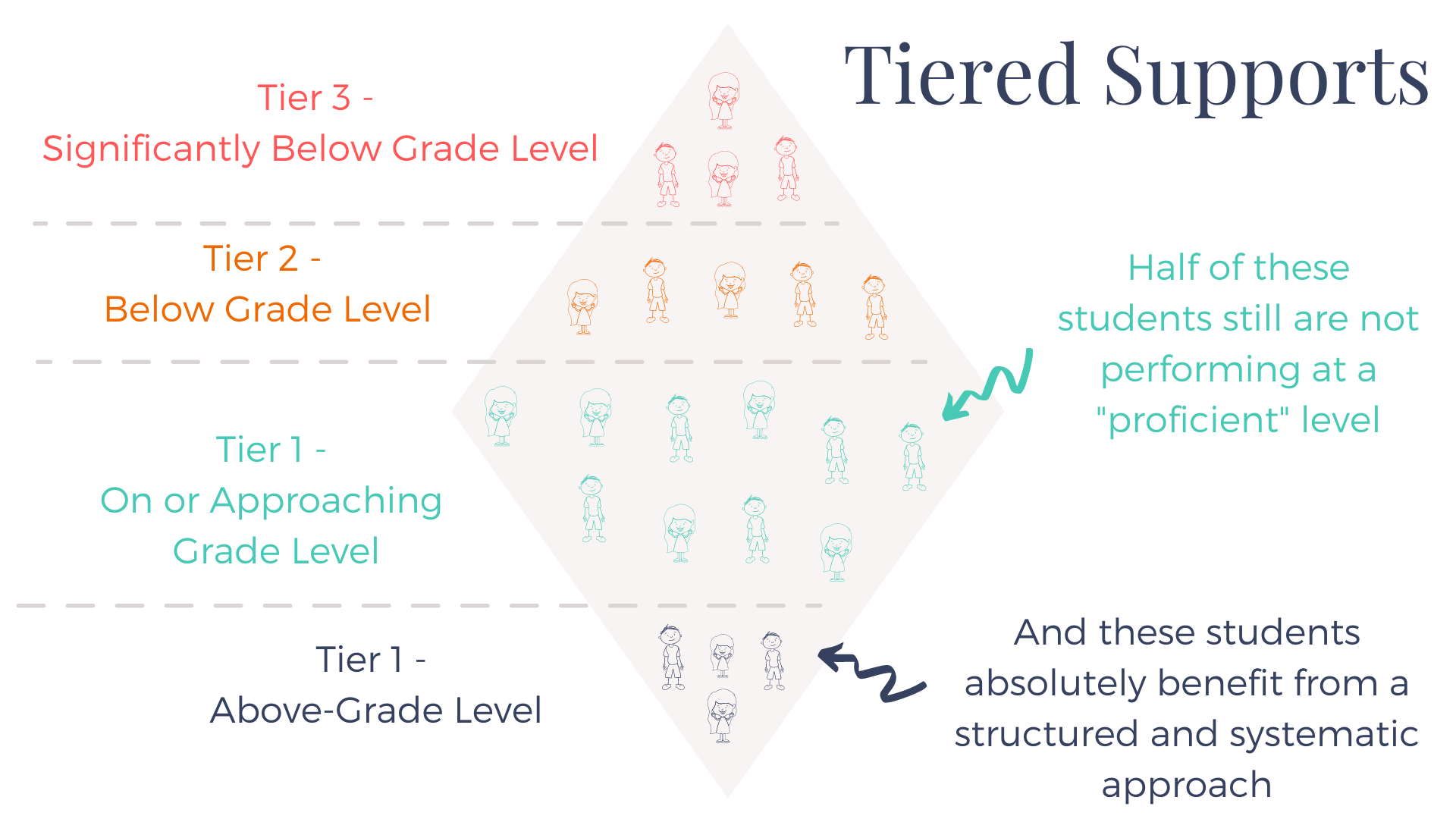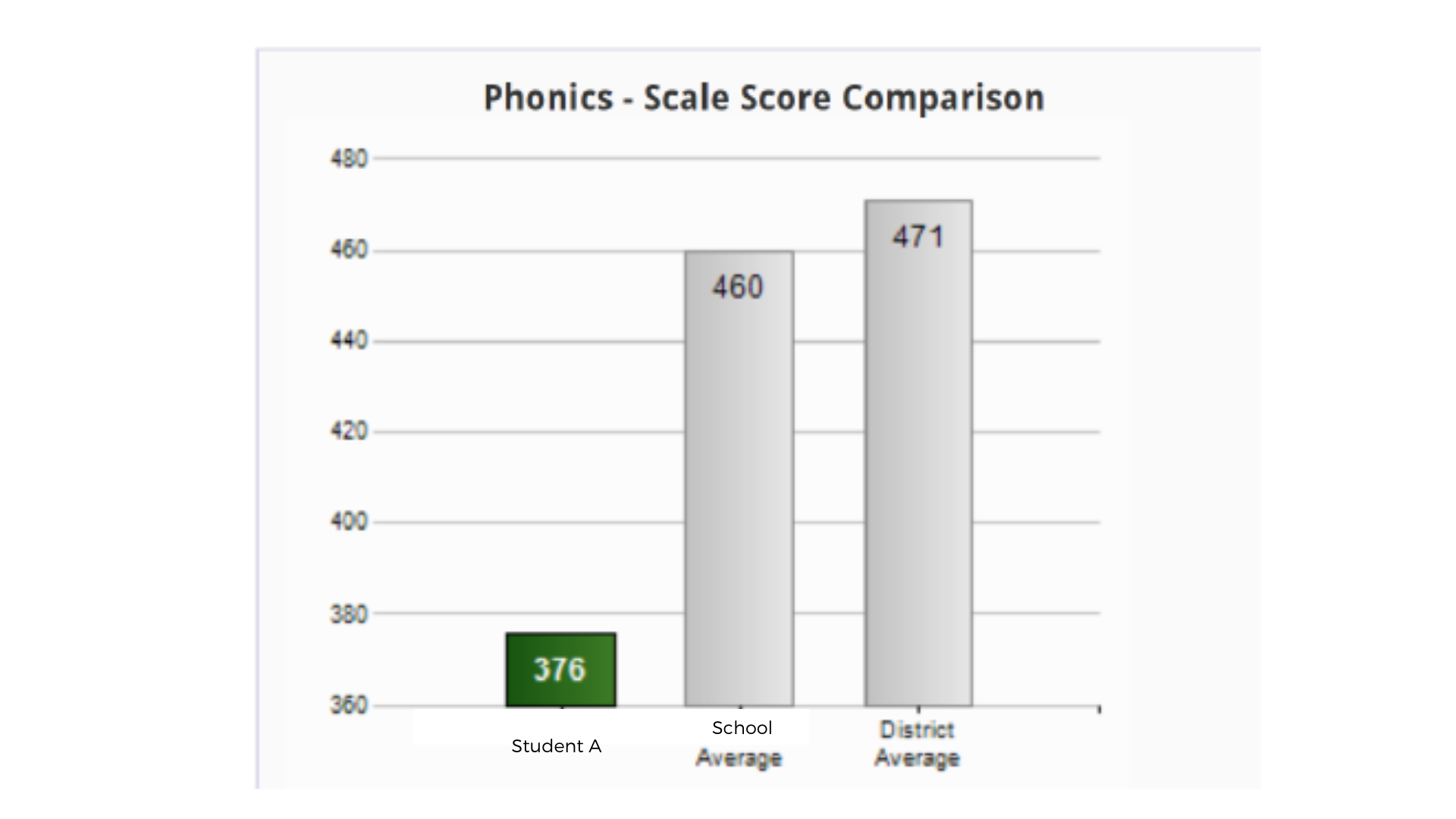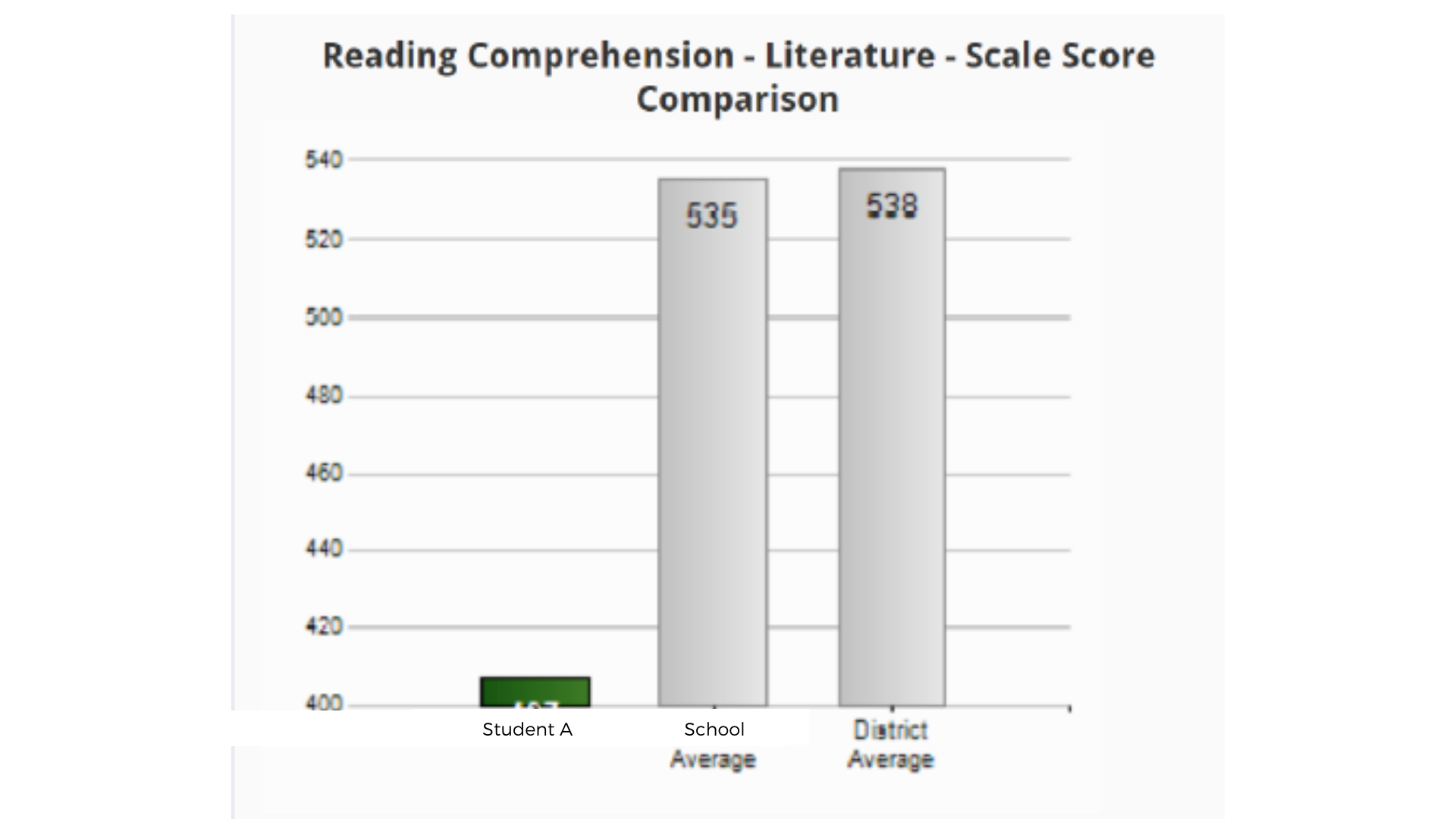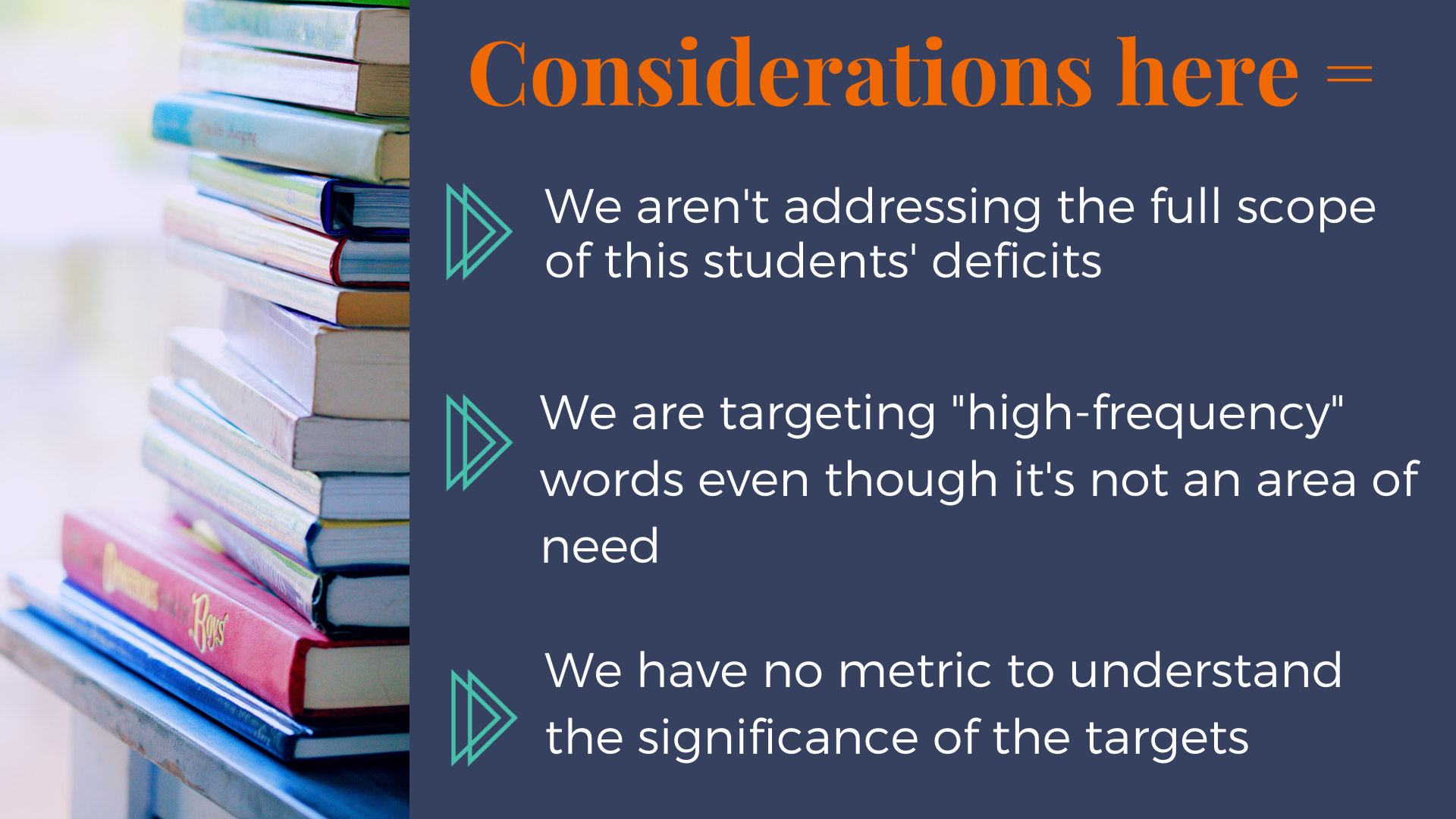Why Tier 3 Students Continue to Struggle
Hi Friends,
Last week we started talking about why so many students struggle to read on grade level.
In case you missed last week’s blog, according to the US Department of Education, back in 2019 66% of 4th-grade students were not reading at grade level.
When we hear this statistic, we immediately begin to think - why?
We did some digging and realized that this many students are struggling because students are falling through the cracks at every level of our tiered support system. You can read more about that here.
For the next few weeks, we are going to go through a few different case studies and look at student profiles from each of these tiers.
As we walk through these cases - we have a VERY important disclaimer!!!
As we’ve mentioned before, we KNOW that if we as special educators, interventionists, and SLPS had access to the tools and resources we needed to quickly and effectively assess our students, create goals, and then lesson plan around these goals - we would be doing it!!! So this isn’t a case of pointing fingers. It’s a case of bringing awareness to a systemic issue we’re facing as educators that needs to be addressed to change the trajectory of our struggling readers!
So, let’s dive in starting with Tier 3.
Tier 3 Student Profile:
Our Tier 3 students are those who are considered to be significantly below grade level. These children are those that are identified and receive IEP services and support.
Let’s look at “Student A”
Student A is a 4th-grade student with average cognition who was identified for special education for speech in Kindergarten.
He is receiving Tier 3 Support such as:
20 minutes per day of direct literacy instruction
10 minutes per day of speech-language support
This child is in the general education classroom for 85% of his day.
When looking at this student’s iReady Data, he…
Tested out of Phonological Awareness (this is often based on students’ ages and not actual abilities as it is expected that after a certain age students have these skills solidified).
Received a Scale Score of 415 for High-Frequency words, placing him at a first-grade level, but his performance was actually better than his school’s average and consistent with the district average.
Received a Scale Score of 376 for Phonics, placing him at a Kindergarten Level.
Received a Scale Score of 444 for Vocabulary, placing him at a first-grade level.
Received a score of 407, placing him at a Kindergarten level for Literature Comprehension, and a 419 placing him at a first-grade level for Informative Text Comprehension.
In addition to his iReady data, let’s also take a look at his Standardized Assessment data
The picture below outlines this student’s percentile scores. In order to be considered in the average range, a student would need to be between the 25th and 75th percentile (the teal bars would be around the center of the page).
Notice how this student’s graph looks like it hasn’t been filled out. That means that this student’s scores were low enough that the bars weren’t registering in the table. These assessments were given when the child was 10 years, 6 months old, and his reading and writing scores are all below the first percentile. His phonological processing scores ranged from the 1st percentile to the 16th percentile and his language ability tested between 6th-21st percentiles.
When we look at all of these scores, it tells us that not only is this child below grade level, it tells us that they are three to four years behind. They are still scoring in the Kindergarten - 1st-grade range, even having been identified for IEP services in Kindergarten.
Let’s take a look at his current IEP
This student has the following goals:
Phonics goal: Student will decode multisyllable words.
High-Frequency “sight word” goal: Read grade-appropriate irregularly spelled words.
Phonics goal: Read short-vowel words using word patterns, word families, and common letter patterns.
There is also a reading comprehension rubric that includes the following targets. Scored on a 0-5 scale.
Be able to identify the main ideas and supporting details in a text
Be able to use information in a text to answer reading comprehension questions
Looking through all of this student’s scores, goals, and profile, we need to consider the following -
We aren’t addressing the full scope of this student’s deficits
This student is struggling across the board, but he only has goals written for decoding multisyllable words, sight words, reading short vowel sound words, and being able to answer main idea/direct recall comprehension questions. When we look through his data, however, we see a much bigger struggle in all 5 Core-Components of Literacy. He needs goals that target phonological awareness, phonics & decoding, fluency, comprehension, AND writing - and his instruction should explicitly show him how all of these things come together.
We are targeting “high-Frequency words” even though it’s not an area of need
While the student is impacted in this area, he is actually above the school’s overall score. This is concerning because even though he knows sight words better than most at his school, he isn’t able to read. This leads us to question the significance of this goal/skill.
We have no metric to understand the significance of the targets
When we read through a child’s IEP, treatment plan, or any kind of document that outlines their scores, goals, and progress - we NEED it to be clear and specific. If we cannot read through it and understand exactly what is being measured, where the student falls, and how the intervention aims to support this child’s skill deficits, we need to edit the goals.
When writing a plan, our hope is that not only can any other interventionist pick it up and understand what the services look like and what the students’ strengths & weaknesses are, but that the child’s parent/guardians can as well. We need to communicate clearly and upfront with families so that they understand what their child is working on, what progress has been made, what their child continues to struggle with, etc. We want transparency and to be able to show them the full picture.
Next week, we will be talking about another student who is also in Tier 3. If you have specific questions that you’d like us to address, please leave them in the comments below!
As we look through these student profiles, we will also begin jumping into how we can change this trajectory for them. If you don’t want to wait to find out, check out our FREE workshop, How to Create SOR-Aligned Goals & Track Data. In this free workshop, you will learn how to use the data you already have to set appropriate goals, uncover the key to setting up your lessons to make data tracking easy and learn how to manage & organize your data. Plus, you’ll get a free data-tracking template!








